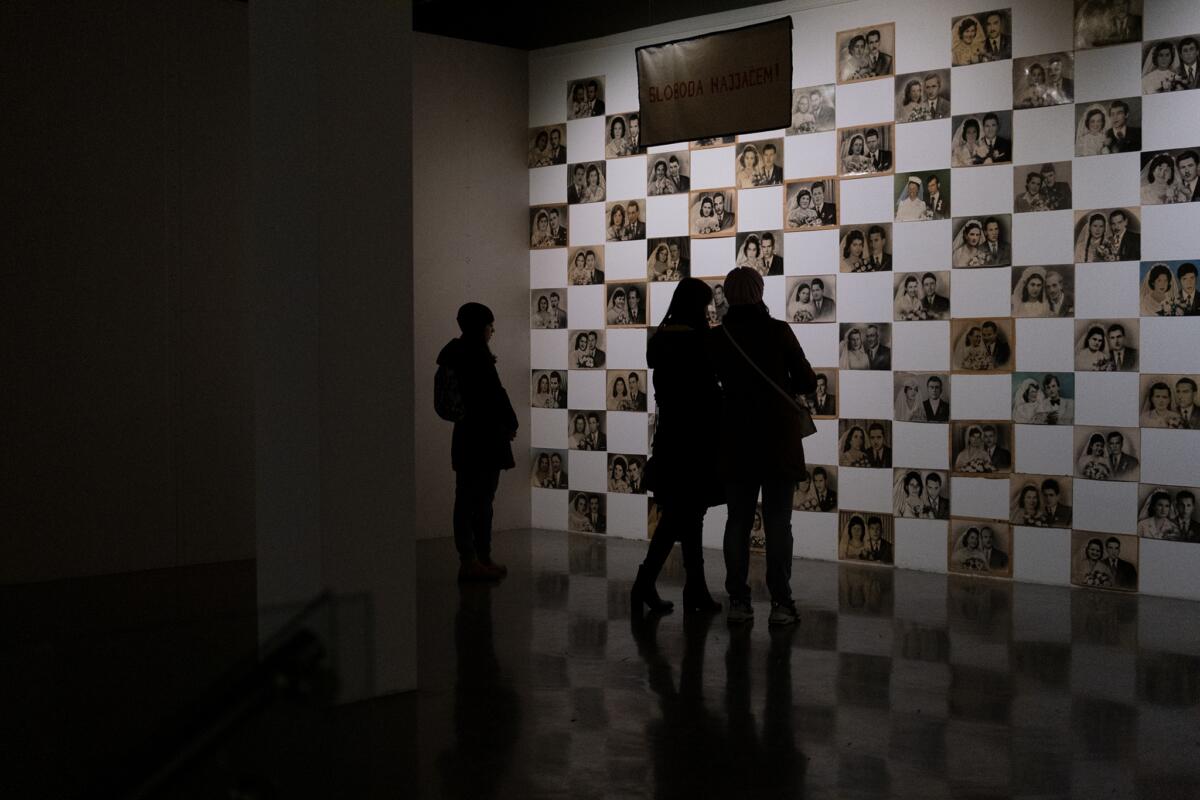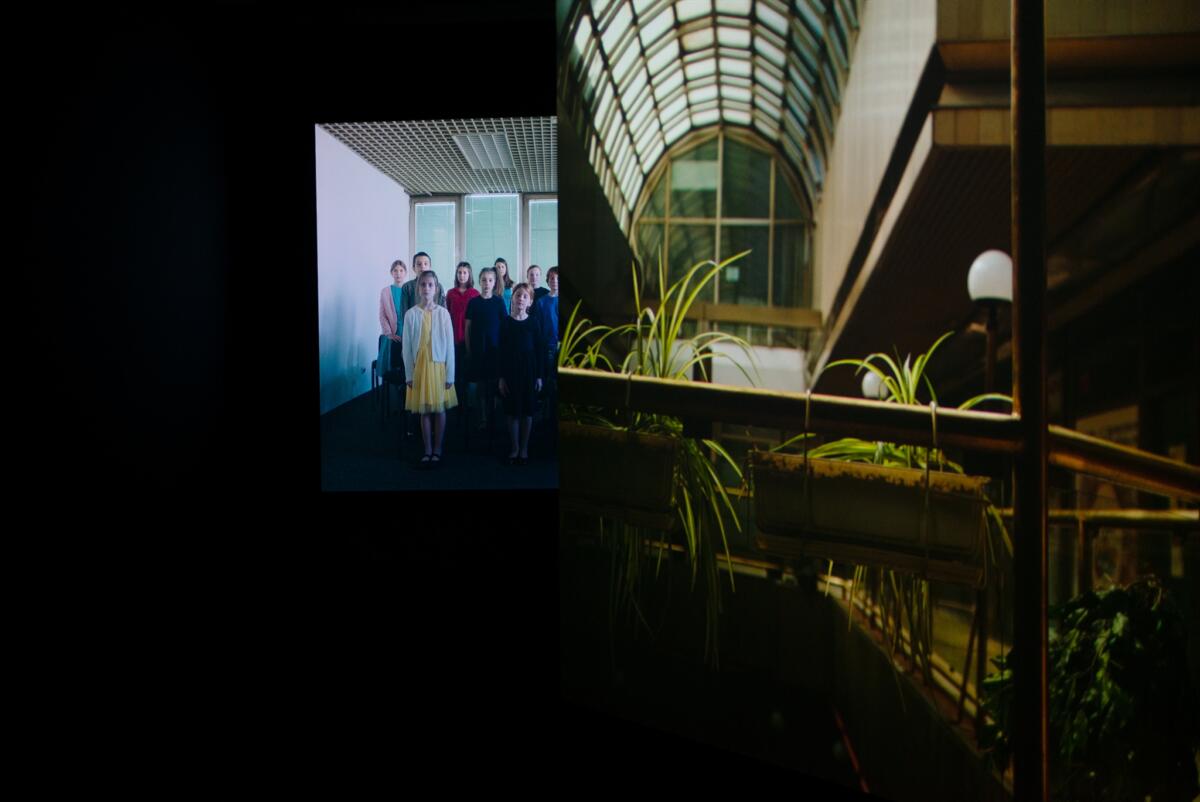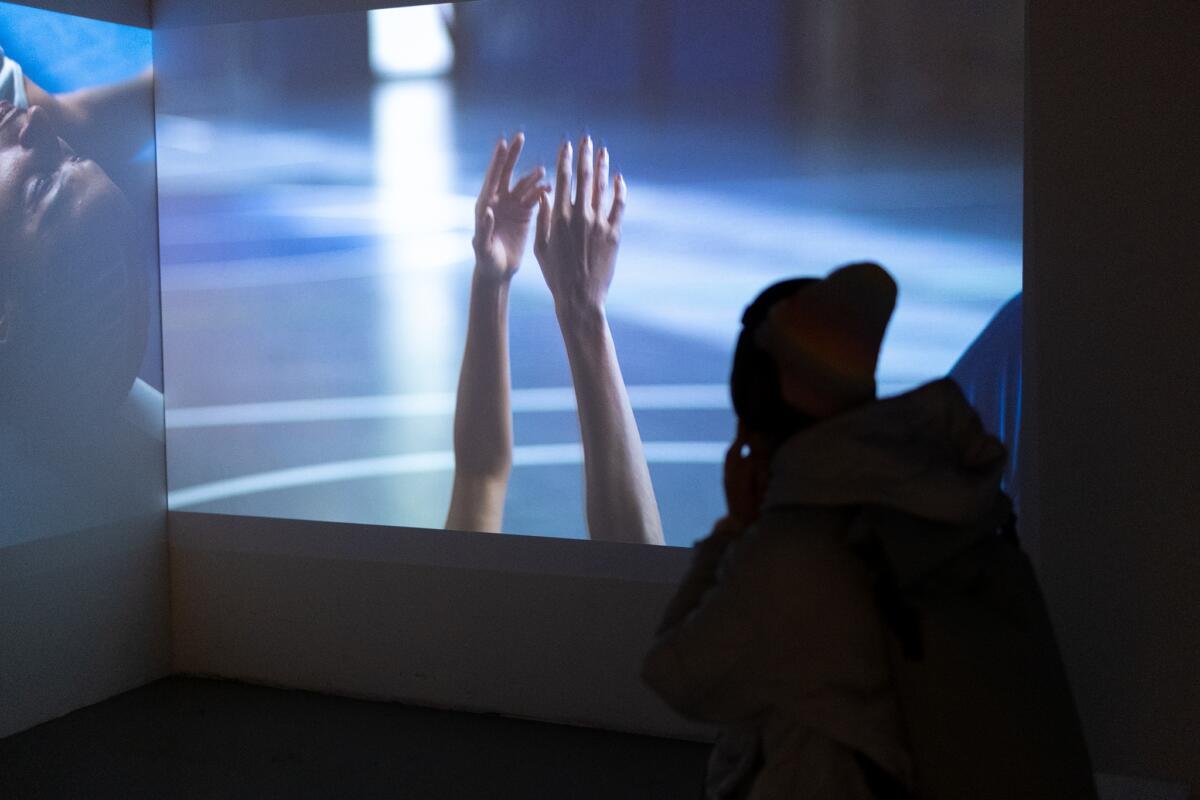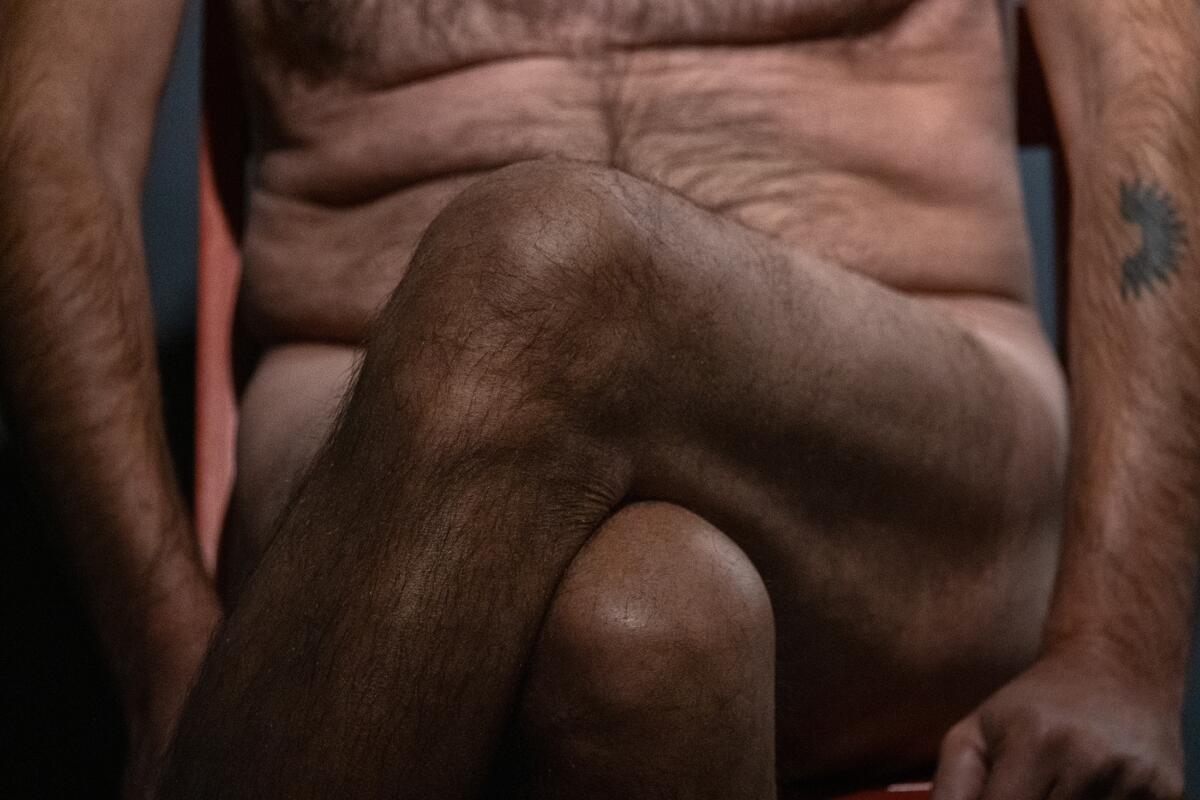
The October Salon is one of the oldest and most renowned international exhibitions of contemporary art in Serbia. Founded in 1960 by the City of Belgrade and inaugurated on the day of the liberation of the capital of former Yugoslavia from the Nazi invasion, initially, the show was meant to offer a representation of the current trends in the local art scene. It’s only since the early 2000s that the salon has been given an international orientation. Following the biennale model, every two years an artistic director and jury are appointed to craft an exhibition that could work as a platform for encounters, stimulating interactions between the local art scene and internationally known art professionals. In its renewed format, the international jury usually assigns three awards to the best achievements whilst the artistic director is in charge of proposing the theme and for developing the exhibition in collaboration with the Cultural Center of Belgrade (KCB), a multidisciplinary cultural institution having an outstanding record of involvement in prestigious domestic and international projects in the fields of visual art and cinema. Established in 1957, the KCB has been the long-term organizational partner of October Salon and is one of its main venues, together with the Belgrade City Museum, a former military academy, turned over by the Ministry of Defence to the city; a venue that has now become unavailable due to ongoing renovations.






Not only departing from the typical appointment of artistic director, the 59th October Salon presents many inconsistencies if compared with previous editions. Taking place only one year after the recently concluded 58th edition “The Dreamers”, named by Italian curators Ilaria Marotta and Andrea Baccin who were inspired by Bernardo Bertolucci’s homonymous film, the curatorship of this year’s October Salon was awarded to the curatorial team of the KCB who, in turn, decided to not have any other overarching title or theme than “59th October Salon”. Announced as the “leap” edition, this year’s October Salon proposed a meta-reflection on “the way of working, conceptualizing and realizing” one of the most respected exhibitions in the contemporary Serbian art scene. KCB’s associate director Zorana Đaković Minninti, along with its curatorial team, including curators Katarina Kostandinović and Jana Gligorijević, invited over 60 artists and theoreticians, mainly coming from the region of former Yugoslavia, to answer questions such as “Who are you?”, “What are you?”, and “Where are you heading?”, and to develop recommendations for the next edition of October Salon. As part of the curatorial concept, they wished to run this process of revision in view of the important sixtieth anniversary of the salon, which has already been scheduled for 2024, in a transparent and inclusive manner, by involving the local art scene at each stage of its conceptualization.





As I got to know through an informal conversation with the artistic director and one of the curators, they have been welcoming and encouraging possible propositions from the KCB’s internal team and artists since the very conception of this year’s Salon. In a departure from past editions of the biennial, no formal “open call” to select artists was issued by the KCB. Even if they had managed to expand their previous, autochthonous knowledge of the local art scene, this chosen working methodology on the one hand, favored spontaneous collaboration and regional exchange of ideas, while on the other hand, undermined their initial proposition of running a revised process of the Salon’s structure and concept in an open and participatory manner, as they themselves overtly admitted.




Divided into a sequence of five openings that occurred throughout the duration of the exhibition, this year’s edition of the biennial took place in eleven venues across the city and included some site-specific interventions on building façades, billboards, and in the newspaper “Danas Daily”. The galleries of the KCB – dedicated for the first time to a single artist – hosted the solo show of Milica Tomić in honor of her significant contribution to the Serbian contemporary art scene. Venues such as the Salon of the Belgrade City Museum, University Library, the Marambo Legacy House, the Salon of the Museum for Contemporary Art, and Kula Art Hub hosted group shows, which reinterpreted in a free and multidirectional manner the questions at the center of KCB’s curatorial statement. The main venues of the 59th October Salon were inaugurated on the day of the annual commemoration of the liberation, the 20th of October, as to remind the public of the historical roots behind this event. The biennial, with its rich public programme of performances and symposia, ended on the 4th of December in front of the Cultural Centre of Belgrade with the intervention by the collective Šok ZaDruga ”IN THE TIMES OF CRISIS YOU BITE YOUR HARDEST!” (2021). The Novi Sad-based cooperative of young creators beat the dust out from a carpet, involving the public in a sort of cathartic, energetic ritual that seemed to restore hope for the future of October Salon.





Similar critical attitudes toward October Salon are not new in the historical trajectory of the exhibition. In the early 70s, alternative Octobers were organized regularly at the Student Cultural Center (SKC). According to local art historians, these events constituted an oppositional cultural activity to the salon, an exhibition of bourgeois imprint that, having at the time its location in the Modern Gallery of Belgrade, used to represent the fortress of modernist aestheticism. Unfortunately, however, if confronted with previous attempts at regional institutional critique, when it comes to the 59th October Salon, ultimately, it seems that the possibility of a debate on the fate of the biennial had been scaled down to a series of round tables that took place on November 25th and December 1st, 2022, organized by the Serbian session of AICA (the International Association of Art Critics) and SEEcult.org, a non-for-profit association dedicated to educational and cultural activities in the field of art, active in the Balkans.






One of the few counter examples is represented by Milica Tomić’s exhibition “How on Earth?!” an exhibition divided into four independent chapters realized in dialogue with curator and companion, Jelena Vesić, and other guest artists from the galleries of the KCB. The installations and videos exposed in the upper floors of KCB are the ones that targeted more specifically the contemporary Serbian and international art scenes, addressing its fragility and precariousness. One of the rooms at Artget Gallery was filled with installation materials showing the process of setting up an exhibition, usually hidden from visitors. The room hosted the remains of Jim Lambie’s work from the group exhibition “Breaking Step/U raskoraku”, which took place in 2007, the point when the Museum of Contemporary art of Belgrade closed for a restoration that lasted ten years. These remains, reshuffled into a site-specific installation titled “Suspended Museum at the 59th October Salon”(2022), were displayed alongside traces of “The Final Letter A” (2010), a performance that Tomić realized in the vacant building of the same museum, shortly after the process of renovation had begun. Finally, Tomić’s work “From Socialism to Capitalism: Relapse! And Imagine Art Market” (2005) was projected on a wall in the second room of Artget Gallery, adjacent to the first one. The video consists of a sequence of interviews with actors of the art system and market in different cities, between the Balkans and Central Europe. The relationship between the art market and the neoliberal economy was a subject also echoed in Milica Lopičic’s photographs, “Art in Transit, or: From an Artwork To Commodity” (2018), portraying wooden boxes for the transportation and storage of artworks stored in areas dedicated to shipping commodities. Apart from these pieces and a few others – such as Katarina Petrović’s video “Negative October Salon (Overtime Boycott)” (2022) at Kula Art Hub, the initial questions posed in the curatorial statement, as a framework for considering the biennial, were interpreted by most of the works on display even prior to the context of the October Salon. Thus, collective knowledge emerged from the exhibition through composition and the cohabitation of different artworks in each venue rather than through any pre-set narratives, as the latter is usually the case in such large-scale biennial exhibitions.




Identity questions and the attempt to find alternative points of reference in a new, disaggregated world also showed up in a few works in the exhibition. In Kula, a not-for-profit art space, Mila Panić ironically hung a neon sign that read “Make it in Germany”. “Made in Bosnia (Make it in Germany)” (2022), appropriating the slogan of the German government’s webpage for qualified foreign workers, as a comment on the experience of displacement. This work appeared next to a series of drawing and textual interventions exposing the emotional state connected to the artist’s personal story. In the Museum of Contemporary Art, Ana Adamović presented a two-channel video installation with a group of children singing the cantata “A Humble Song to the Birds” (1945) by composer Antony Hopkins in relation to the cinematic roundups of the half-abandoned interior of Belgrade’s Glass Mall, a shopping and business center and symbol of the collapse of the Serbian economy in the 1990s. Reflections on the visual identity of Yugoslavia were seen throughout the works, such as “n(ex)t y(o)u /new revisionism” (2019-21) by the art collective Karkatag. Installed at Cvetni Trg Pavilion, the piece consisted of three interactive machines that play with existing assonances between socialist slogans and language of the PR and marketing agencies. Similarly, Marta Popivoda’s video work “SURFACES THAT MATTER: Youth Day’s Parade 1988” (2022) is part of a long-term study on mass performances of social ideology, realized in cooperation with curator Ana Vujanović. By juxtaposing television footage with newly shot materials, the artist investigates the limits of emancipation, specifically in relation to a female, racialized body. At the Marambo Legacy House, Milica Rakić’s film “Red, if You Didn’t Exist, You Should Be Invented” (2021), went further into this investigation regarding women’s emancipation. The film portrays a dialogue between the artist and her alter ego around the limits of the term “freedom”, within partisan mottos of resistance in Yugoslavia after the Second World War. Choral efforts to redefine the meaning of contemporary togetherness and alliance emerged from Sanja Anđelković’s work “Look up! I am no canopy – I am a Messenger” (2022) performed at University Library, which mixes Orthodox chants and myths where cicadas are protagonists and prophets, in a time of anxiety and fear for the current environmental emergency.





The limited timeframe that this year’s artistic team had at their disposal to reinvent a dialogue with the city, and to scout new venues, hindered the possibility of creating coherent connections between the new locations and the works displayed beyond the spontaneous initiatives of artists who, in response to October Salon’s general invitation, opted for the realization of site-specific interventions. For example, Mia Ćuk’s audio essay “Department of Occasionality” (2022), which was installed in University Library, disclosed small, imaginative stories while inviting guests to wander around the shelves of the library’s study rooms.





Supposing that someone leaves aside the interaction between the locations and the artworks and rather focuses on the selection of artists, due to the lack of a conceptual organization of the various content arising from the artworks on view, visitors were also left wondering about the criteria that drove the selection of submitted proposals. Some might have already been familiar with a few of the artists selected because they were previously involved in the recently concluded Manifesta 14, as in the case of previously mentioned Marta Popivoda, or Driant Zeneli who presented their video “The Firefly Keeps Falling and the Snake Keeps Growing”(2022). Other internationally-known artists included in recent international essayistic exhibitions on regional artistic production could be found, such as the room dedicated to film director Želimir Žilnik at the Faculty Of Drama Arts and Darinka Pop Mitić’s drawn-out intervention in the cultural section of “Danas Daily”, an independent, historically left-oriented newspaper. Few are the names of artists whose backgrounds have no direct connections with territories included in the former Yugoslavia, such as Clément Cogitore, Teresa Margolles, and Olivia Plender. There were also a few local collaborations that do not necessarily pertain to the traditional art world, such as the participation of the Institute for Philosophy and Social Theory, a scholarly research group affiliated with the University of Belgrade who presented, for the first time, the video installation “The Possibility of ‘We’” (2022), a work that tries to envision new forms of future togetherness that takes a departure from the possible meanings assigned to the first plural person – this is a concept that has found many echoes throughout the exhibition.





While comparing the 59th October Salon especially to the previous two editions, which featured foreign curators who worked with international artists and reserved scarce attention to the local art scene as well as to contextual socio-political issues, this year the exhibition showed a great inversion. By asking simple questions such as “who are we?”’ and “where are we heading?”, the 59th October Salon has implicitly proposed an exercise of repositioning Serbian artistic production and its main actors within a historical framework that must be examined using both past and present tenses before any possible future can be considered. However, to an international audience, of which I am a part, these conversations seem to have happened behind closed doors— for example, wall labels were not always translated into second languages and, when available, the descriptions of the artworks didn’t always provided any further context that could suggest why that work was included in the exhibition. A great deal of opacity remains on the relation between the artworks displayed and the set of questions proposed, aside from general terms. The absence of any precise conceptual anchors from which to start navigating the multi-venue exhibition, probably due to the implementation of an open and collective process as a non-officially stated criteria for the artists, did not help overall visitor engagement. Having said that, it may rest as a hope that this form of ambiguity might be revealed as a tactical and gestational framework for the years ahead, facilitating a generation of emerging artists and curators in the reclaiming of spaces and institutional support for the Serbian contemporary art scene – a problem that, according to local actors, has been affecting the region for several generations.
Edited by Ewa Borysiewicz and Katie Zazenski
Imprint
| Artist | Milica Tomić, Božidar Mandić & Porodica bistrih potoka, Slaven Tolj, Sanja Anđelković, Tomislav Brajnović, Marcus Coates, Milica Crnobrnja, Šejma Fere, Predrag Nešković, Daliborka Đurić, Marta Popivoda, Ana Vujanović, Karkatag, Srđan Veljović, Dušan Rajić Dulait, Nemanja Cvijanović, Šok zadruga, Senka Latinović, Vladimir Bjeličić, Jorg Besser, Antonio Grgić, Jednostavno rečeno, Eric Corne, Dubravka Ugrešić, Ana Adamović, Mila Panić, Milica Rakić, DK, Katarina Petrović |
| Exhibition | The 59th October Salon: the ‘Leap’ Edition |
| Place / venue | Belgrade, Serbia |
| Dates | 20.10 -4.12.2022 |
| Photos | Nemanja Knežević, Vladimir Opsenica, Mladen Marić, Jelena Mijić |
| Website | oktobarskisalon.org/en/59th-october-salon/ |
| Index | Ana Adamović Ana Vujanović Antonio Grgić Belgrade Božidar Mandić & Porodica bistrih potoka Daliborka Đurić DK Dubravka Ugrešić Dušan Rajić Dulait Eric Corne Giulia Menegale Jednostavno rečeno Jelena Mijić Jorg Besser Karkatag Katarina Petrović Marcus Coates Marta Popivoda Mila Panić Milica Crnobrnja Milica Rakić Milica Tomić Mladen Marić Nemanja Cvijanović Nemanja Knežević October Salon Predrag Nešković Sanja Anđelković Šejma Fere Senka Latinović Serbia Slaven Tolj Šok zadruga Srđan Veljović The 59th October Salon: the ‘Leap’ Edition Tomislav Brajnović Vladimir Bjeličić Vladimir Opsenica |
